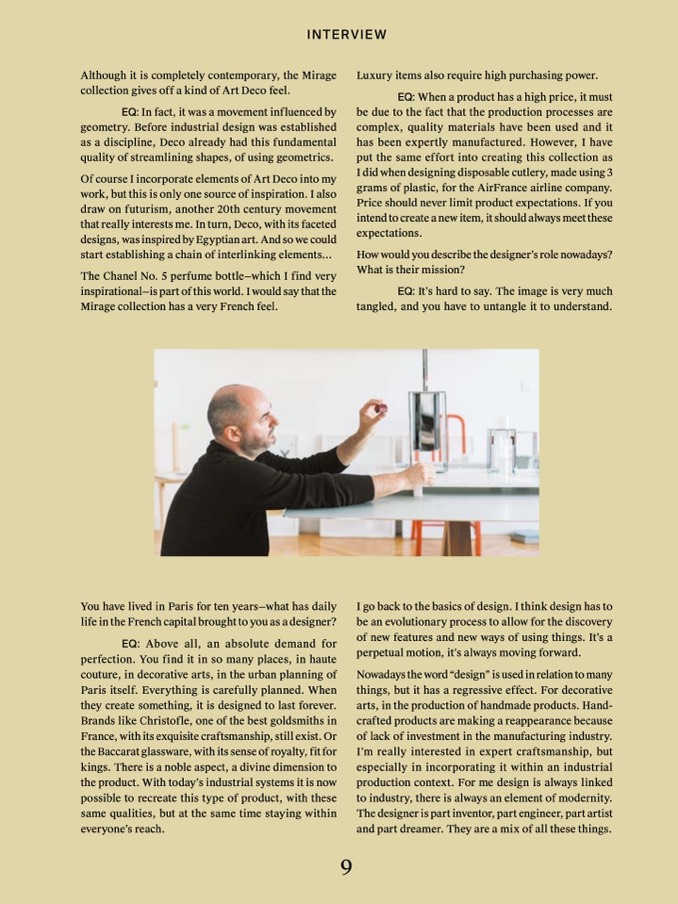
Although it is completely contemporary, the Mirage
collection gives off a kind of Art Deco feel.
EQ: In fact, it was a movement influenced by
geometry. Before industrial design was established
as a discipline, Deco already had this fundamental
quality of streamlining shapes, of using geometrics.
Of course I incorporate elements of Art Deco into my
work, but this is only one source of inspiration. I also
draw on futurism, another 20th century movement
that really interests me. In turn, Deco, with its faceted
designs, was inspired by Egyptian art. And so we could
start establishing a chain of interlinking elements...
The Chanel No. 5 perfume bottle—which I find very
inspirational—is part of this world. I would say that the
Mirage collection has a very French feel.
Luxury items also require high purchasing power.
EQ: When a product has a high price, it must
be due to the fact that the production processes are
complex, quality materials have been used and it
has been expertly manufactured. However, I have
put the same effort into creating this collection as
I did when designing disposable cutlery, made using 3
grams of plastic, for the AirFrance airline company.
Price should never limit product expectations. If you
intend to create a new item, it should always meet these
expectations.
How would you describe the designer’s role nowadays?
What is their mission?
EQ: It’s hard to say. The image is very much
tangled, and you have to untangle it to understand.
INTERVIEW
You have lived in Paris for ten years—what has daily
life in the French capital brought to you as a designer?
EQ: Above all, an absolute demand for
perfection. You find it in so many places, in haute
couture, in decorative arts, in the urban planning of
Paris itself. Everything is carefully planned. When
they create something, it is designed to last forever.
Brands like Christofle, one of the best goldsmiths in
France, with its exquisite craftsmanship, still exist. Or
the Baccarat glassware, with its sense of royalty, fit for
kings. There is a noble aspect, a divine dimension to
the product. With today’s industrial systems it is now
possible to recreate this type of product, with these
same qualities, but at the same time staying within
everyone’s reach.
I go back to the basics of design. I think design has to
be an evolutionary process to allow for the discovery
of new features and new ways of using things. It’s a
perpetual motion, it’s always moving forward.
Nowadays the word “design” is used in relation to many
things, but it has a regressive effect. For decorative
arts, in the production of handmade products. Hand-
crafted products are making a reappearance because
of lack of investment in the manufacturing industry.
I’m really interested in expert craftsmanship, but
especially in incorporating it within an industrial
production context. For me design is always linked
to industry, there is always an element of modernity.
The designer is part inventor, part engineer, part artist
and part dreamer. They are a mix of all these things.
9

